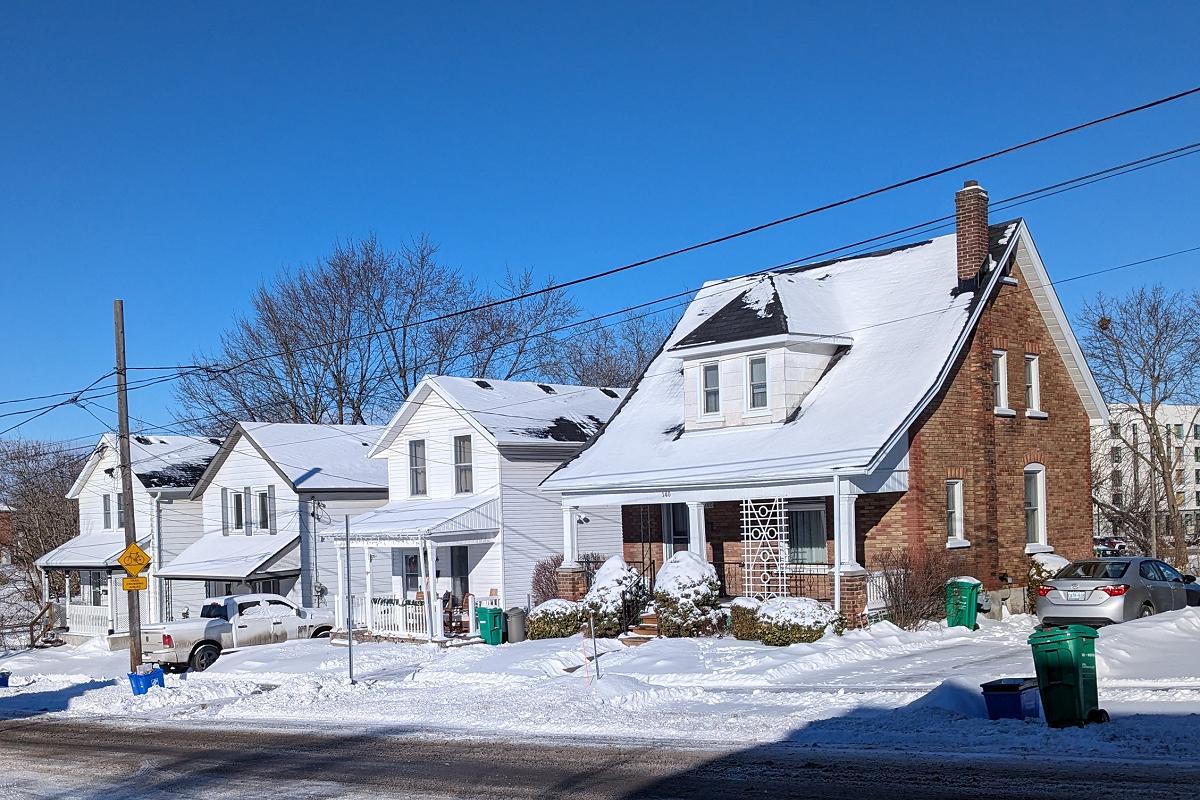Unlock Savings: Federal Greener Homes Grant Explained

Federal Greener Homes Grant In an era where energy efficiency and environmental stewardship are at the forefront of national priorities, the Federal Greener Homes Grant emerges as a beacon of hope for homeowners seeking to enhance their living spaces while contributing to a sustainable future. This initiative, crafted by the government, is more than just a financial aid program—it’s a call to action for citizens to rethink their approach to home improvement, with a focus on energy conservation and reduced carbon emissions.

The Genesis of the Federal Greener Homes Grant
The Federal Greener Homes Grant was conceived as part of a broader strategy to combat climate change and promote sustainable living across the country. Recognizing that residential energy consumption accounts for a significant portion of national greenhouse gas emissions, policymakers identified home retrofits and energy-efficient upgrades as a key area for intervention.
The grant is designed to incentivize homeowners to undertake energy-efficient upgrades by offsetting a portion of the costs associated with these improvements. By making these upgrades more financially accessible, the government aims to accelerate the transition towards greener homes, ultimately reducing the carbon footprint of residential buildings nationwide.
Who is Eligible?
The Federal Greener Homes Grant is open to a wide range of homeowners, but there are specific criteria that must be met to qualify. First and foremost, the program is available to Canadian homeowners who reside in a single-family home, townhouse, or duplex. Additionally, the home must be the primary residence of the applicant.
To be eligible, homeowners must also undergo an energy assessment by a certified energy advisor. This assessment, often referred to as an energy audit, is essential for identifying the areas of the home that would benefit most from energy-efficient upgrades. The energy advisor will provide a detailed report outlining the recommended improvements, which serves as a roadmap for the homeowner’s retrofit journey.
It’s important to note that not all energy-efficient upgrades are eligible for the grant. The program focuses on specific types of improvements that have been proven to deliver significant energy savings. These include insulation upgrades, window and door replacements, installation of heat pumps, and other high-efficiency heating and cooling systems.
How Much Can You Save?
One of the most appealing aspects of the Federal Greener Homes Grant is the substantial financial support it offers. Homeowners can receive up to $5,000 in grants to cover the cost of eligible energy-efficient upgrades. Additionally, the program provides up to $600 towards the cost of the initial and post-retrofit energy assessments, making the entire process more affordable.
The exact amount a homeowner can receive depends on the specific upgrades undertaken and the energy savings they deliver. For example, installing a high-efficiency heat pump could qualify for a higher grant amount than replacing a single window, due to the greater impact on the home’s overall energy consumption.
It’s also worth mentioning that the Federal Greener Homes Grant is designed to complement other financial incentives, such as provincial rebates and utility company programs. By combining these incentives, homeowners can maximize their savings and reduce the out-of-pocket costs of their energy-efficient upgrades.
The Application Process
Applying for the Federal Greener Homes Grant is a straightforward process, but it does require careful planning and attention to detail. The first step is to schedule an energy assessment with a certified energy advisor. This assessment will form the foundation of the grant application, so it’s important to choose an experienced and reputable advisor.
Once the energy assessment is complete, the advisor will provide a detailed report outlining the recommended upgrades. This report is a critical component of the grant application, as it demonstrates the potential energy savings of the proposed improvements.
Homeowners must then undertake the recommended upgrades within a specified timeframe. It’s important to keep detailed records of all work completed, including receipts and invoices, as these will be required to receive the grant.
After the upgrades are completed, a post-retrofit energy assessment is conducted to verify the improvements and calculate the actual energy savings. This assessment is essential for determining the final grant amount, which will be based on the verified energy savings.
Finally, homeowners can submit their grant application, including all required documentation, to the appropriate government agency. Once the application is reviewed and approved, the grant funds are disbursed directly to the homeowner.
The Impact of the Federal Greener Homes Grant
The Federal Greener Homes Grant is more than just a financial incentive—it’s a powerful tool for driving widespread change in how Canadians approach home improvement and energy efficiency. By encouraging homeowners to invest in energy-efficient upgrades, the program is helping to reduce national greenhouse gas emissions, lower energy consumption, and promote sustainable living.
But the impact of the grant extends beyond environmental benefits. By making homes more energy-efficient, the program also helps to reduce energy costs for homeowners. This is particularly important in a time of rising energy prices, as it provides a tangible way for families to save money on their utility bills.
Moreover, the Federal Greener Homes Grant is creating new opportunities for growth in the green economy. As demand for energy-efficient products and services increases, so too does the need for skilled workers in fields such as construction, energy auditing, and HVAC installation. This is driving job creation and economic growth, while also fostering innovation in the development of new green technologies.
Common Upgrades and Their Benefits
To fully understand the value of the Federal Greener Homes Grant, it’s important to explore some of the most common upgrades that homeowners can undertake, and the benefits they provide.
1. Insulation Upgrades
One of the most effective ways to improve a home’s energy efficiency is by upgrading its insulation. Properly insulated homes retain heat in the winter and stay cooler in the summer, reducing the need for heating and cooling. This not only lowers energy bills but also enhances comfort throughout the year.
Upgrading insulation can involve adding new insulation to walls, attics, basements, and crawl spaces, as well as sealing gaps and cracks that allow air to escape. These improvements can significantly reduce a home’s energy consumption, making it one of the most impactful upgrades eligible for the Federal Greener Homes Grant.
2. High-Efficiency Windows and Doors
Replacing old, drafty windows and doors with high-efficiency models is another popular upgrade under the Federal Greener Homes Grant. Modern windows and doors are designed with advanced materials and construction techniques that minimize heat loss, improve insulation, and reduce energy consumption.
In addition to energy savings, high-efficiency windows and doors also enhance a home’s security and curb appeal. They can also improve indoor air quality by reducing drafts and preventing the infiltration of pollutants.
3. Heat Pumps
Heat pumps are becoming increasingly popular as a green alternative to traditional heating and cooling systems. Unlike conventional systems that generate heat, heat pumps transfer heat from one place to another, making them highly efficient.
Heat pumps are eligible for the Federal Greener Homes Grant because they can significantly reduce a home’s energy consumption and greenhouse gas emissions. By installing a high-efficiency heat pump, homeowners can enjoy year-round comfort while reducing their carbon footprint.
4. Renewable Energy Systems
For homeowners looking to take their energy efficiency to the next level, renewable energy systems such as solar panels are an excellent option. While the upfront cost of these systems can be high, the Federal Greener Homes Grant can help offset the expense, making renewable energy more accessible.
Solar panels generate clean, renewable energy that can power a home’s electrical systems, reducing reliance on fossil fuels and lowering energy bills. Over time, the savings on energy costs can offset the initial investment, making solar panels a smart long-term investment for environmentally conscious homeowners.
Maximizing Your Savings: Combining Grants and Incentives
To get the most out of the Federal Greener Homes Grant, homeowners should explore additional incentives that may be available at the provincial or municipal level. Many provinces and cities offer their own rebates and incentives for energy-efficient upgrades, which can be combined with the federal grant to maximize savings.
For example, some provinces offer additional rebates for installing high-efficiency heat pumps, while others provide incentives for solar panel installations or home energy audits. By combining these programs, homeowners can significantly reduce the out-of-pocket cost of their upgrades.
It’s also worth exploring financing options such as low-interest home improvement loans, which can help spread the cost of the upgrades over time. Many financial institutions offer special financing for energy-efficient home improvements, making it easier to manage the upfront costs.
The Future of Home Energy Efficiency
The Federal Greener Homes Grant represents a significant step forward in the national effort to reduce greenhouse gas emissions and promote sustainable living. But it’s just one part of a broader movement towards greater energy efficiency and environmental responsibility.
As more homeowners take advantage of the grant and undertake energy-efficient upgrades, the cumulative impact on the environment will be substantial. Over time, this will contribute to a significant reduction in national greenhouse gas emissions, helping to mitigate the effects of climate change.
But the benefits of the Federal Greener Homes Grant extend beyond environmental impact. By making homes more energy-efficient, the program is also helping to reduce energy costs for families, create jobs in the green economy, and drive innovation in the development of new technologies.
As we look to the future, it’s clear that energy efficiency will continue to be a top priority for homeowners, policymakers, and businesses alike. The Federal Greener Homes Grant is just the beginning—an important first step towards a more sustainable, energy-efficient future for all Canadians.
Federal Greener Homes Grant
The Federal Greener Homes Grant offers a unique opportunity for homeowners to enhance their homes, save money, and contribute to a greener future. By taking advantage of this program, you can unlock significant savings on energy-efficient upgrades and enjoy the benefits of a more comfortable, environmentally friendly home.
Whether you’re considering upgrading your insulation, replacing your windows, or installing a heat pump, the Federal Greener Homes Grant can help make your home improvement goals a reality. So why wait? Take action today and start your journey towards a more sustainable, energy-efficient home with the support of the Federal Greener Homes Grant.






